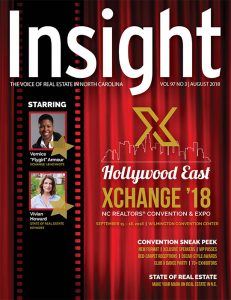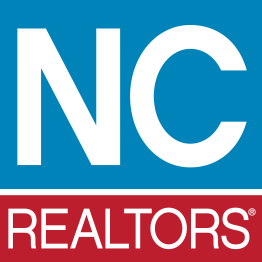The Forgotten: Earned Media

 By: Tracey Gould and Shane Johnson
By: Tracey Gould and Shane Johnson
More newspapers have folded in the past decade than pleats in MC Hammer’s pants. Traditional aka “earned” media has taken a nosedive with the emergence of social aka “self” media. Its importance, however, remains strong, as traditional media continues to be a more trusted source for the public compared to social media, despite the “fake news” issue that abounds. This makes it a helpful, yet often forgotten, tool for association brand building.
“In the past decade, we paid less and less attention to securing earned media because the ‘shiny new penny’ that caught the cooperative eye of associations, specifically social media, was on the rise,” said Patrick LaJeunesse, director of marketing & communications for Cape Fear REALTORS®. “Both print and broadcast went out of vogue, as their audiences dried up.”
Cape Fear REALTORS® (CFR) reversed this approach in 2014 with the advent of Core Standards and the need to broaden branding efforts with homeowners. “No one was paying attention to traditional media,” said LaJeunesse. “This increased the opportunity to land stories when we reengaged with reporters and editors. They were starving for good articles, quotes and leads.” While circulation for U.S. daily newspapers declined from 62.5 million in 1986 to 34.7 million in 2016, on-staff writers have jumped ship to other writing jobs, and the few remaining are eager to find solid contacts that can provide well-written stories and information to build outlet relevance.
Given the new playing field, a different approach is needed to gain maximum return on earned media efforts. Poorly written press releases emailed to general inboxes will gain little traction. Remember, traditional media staff have been cut to the quick. Here are combined strategies that several REALTOR® associations have used to successfully increase earned media placement:
Relationship
Assignment editors, field reporters and camera operators respond to personal connections. A favorable impression of you or your organization is the threshold requirement leading to earned stories. NC REALTORS® staff meets with key media outlet contacts annually for coffee or lunch to build rapport. This is enhanced with periodic phone calls ahead of a planned event or activity to provide a heads-up, so they are aware of future story possibilities. When a media contact attends an event or engages NC REALTORS®, staff makes personal contact, asking if they need anything and making them feel welcome. Both communications and advocacy staff maintain a contact list of media that is updated often and subscribe to a major media database platform. This ensures the appropriate parties receive NC REALTORS® press releases and are notified of activities.
“We also work hard to be seen as a resource,” said Kim McMillan, vice president of marketing & communications for the Charlotte Regional REALTOR® Association (CRRA), who makes an effort to provide reporters names of trusted resources outside of her association. “Even though the coverage may not include us, we like being able to provide other trusted sources, like the director of the apartment association or the spokesperson for the homebuilders. This shows the reporter you’re not only knowledgeable about other aspects of housing and willing to educate, but you’re supportive. Plus, reporters will then be more apt to listen and respond to pitches for other stories.”
Rapid
The news cycle today is almost instantaneous. Delays result in one thing: no coverage. CFR has taken two steps to being nimbler in response to the media. First, the association’s spokesperson policy allows either the president, CEO or their designees to act as spokesperson. This provides flexibility in responding faster to several options available. Second, “quick quotes” are used, often with breaking stories, successfully allowing the organization to be quoted in a story on the presses.
“Often, we will hear about a story being written, and rather than becoming bogged down with the formality of a full press release, we will send a one or two sentence quote in response to the issue, directly to a reporter’s email account,” said LaJeunesse. Last spring, a well-known expert announced his retirement, and anticipating the daily newspaper would be writing a story, CFR sent a quick quote immediately to the reporter on the story. “Our quote from the CEO was included in the final story verbatim because it was appropriate, submitted while the writer was at her keyboard and because we have a good connection with the paper,” said LaJeunesse. “If we’d waited for the president, who is a busy guy, to respond directly or approve a quote, we’d have missed the opportunity.”
There’s absolutely no reason to wait for a reporter to reach out to you for comment or for you to hear about a story on the street before you craft a media response, either. Pitching story ideas to the media carries a lot of weight with impact; yet, pitching to the media is an art form. Be sure to target the right story to the right publication and to the correct reporter. Also, in your verbal or written pitch, clearly state why the content (story) matters to their audience (readers). Include as much high-level information with a compelling point, statistic or quote to get the reporter’s attention, as well as a multimedia element. If you have a photo, infographic or video, your email has a higher likelihood of being opened, and likewise, your story has a higher likelihood of being covered.
Response
Press releases continue to be a useful vehicle for communicating with the media, but they need to be well-written. The remaining staff at traditional media outlets are overworked and the less editing required results in a higher chance of being published. As issues form locally, write a release at the head of the curve, so you can submit quickly at the right time.
“With the Governmental Affairs and Marketing Communications departments collaborating so closely, we proactively respond to issues and send releases at the cusp of a developing story,” said Seth Palmer, political communications and regulatory affairs director for NC REALTORS®. Local associations can also weigh in on state or national issues, if they are in line with the state or national association, and include information on the issue with local perspective to make it relevant to area readers.
It’s also important to be consistent. CRRA averages 25 interviews per year by sticking with a consistent approach to the way they release housing activity each month. “One of the ways we show our consistency is by releasing housing activity each month and incorporating a meaningful quote.” said McMillan. “This quote perhaps leaves a positive impression, but it also acknowledges any challenges that could be occurring.”
With a proactive media relations strategy in place, the reach and results can be invaluable to the REALTOR® brand and association as a whole. In 2013, CFR had 19 earned media stories or broadcast mentions, not counting leadership changes or MLS stats. In 2017, it grew 400 percent to 81 media mentions.
If you have a plan, are committed and stick with it, you’ll undoubtedly see similar results within your own association or business.
Don’t forget the photo op
When it comes to earned media, all opportunities should be well thought-out, even down to the photo op. When CRRA pitched a Q&A with 2018 Association/CarolinaMLS President Jason Gentry to the Charlotte Business Journal back in January, they worked to have the interview at a location that prominently featured their new headquarters in the background. Photos of the construction helped create additional buzz and future story ideas.
Shane Johnson, JD, CAE, is president and CEO of the San Antonio Board of REALTORS®. Tracey Gould, M.S. IMC, CPSM , is the former vice president of marketing and communications for NC REALTORS®.

